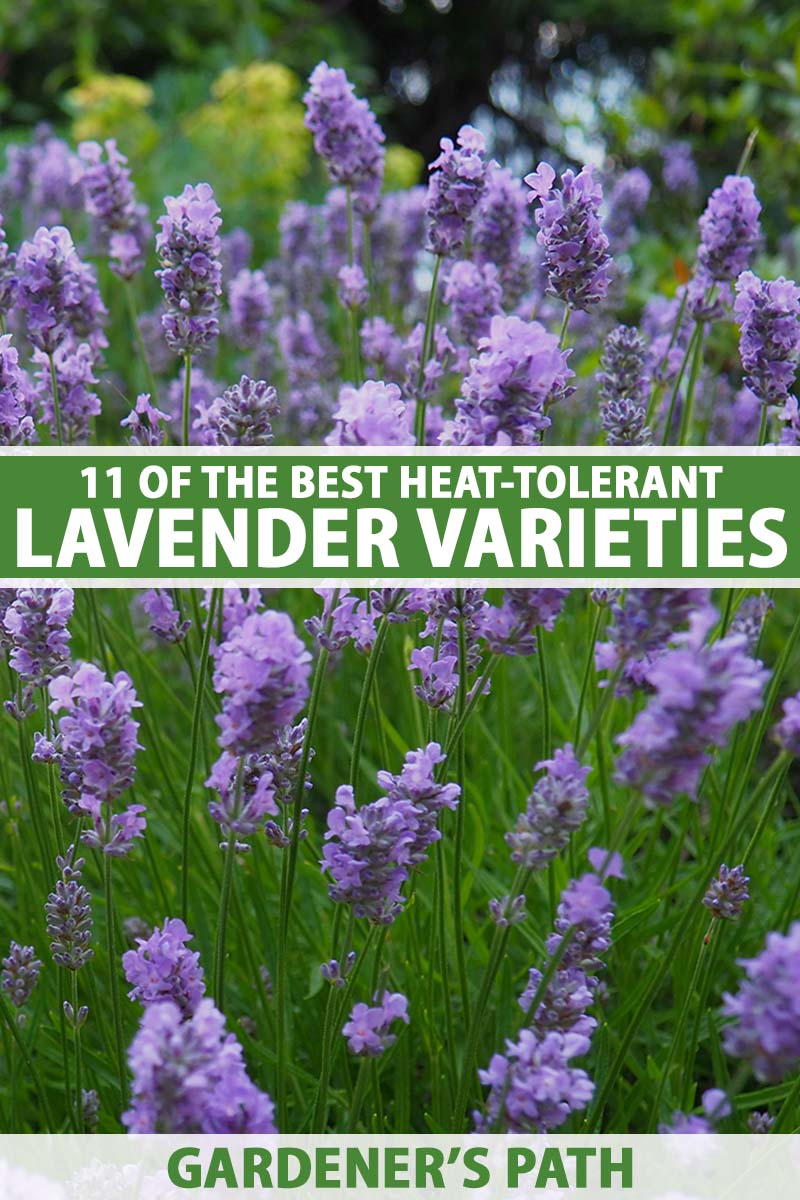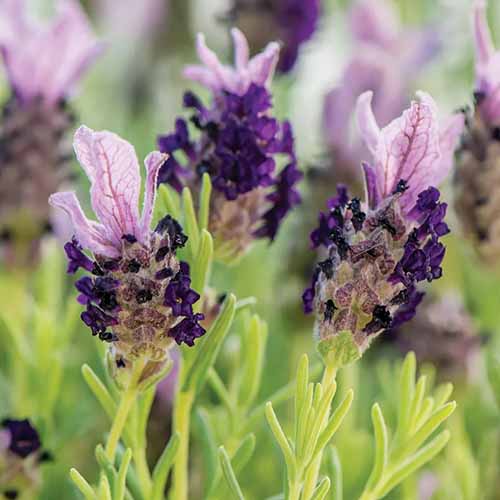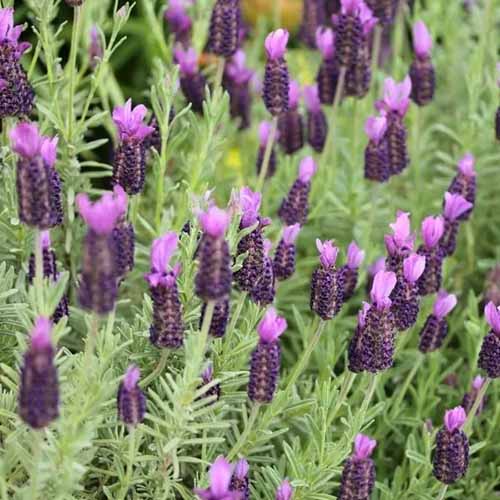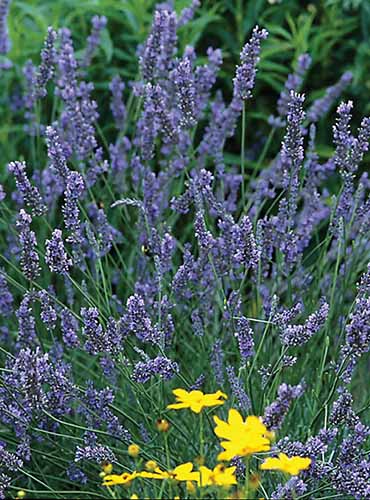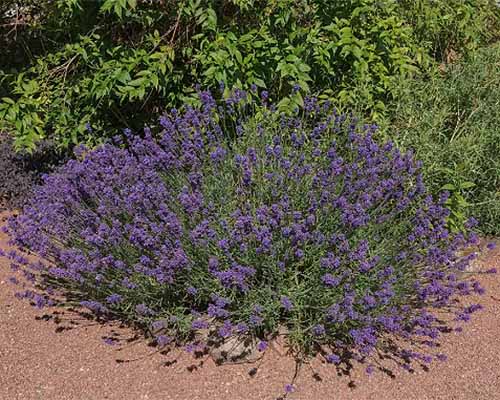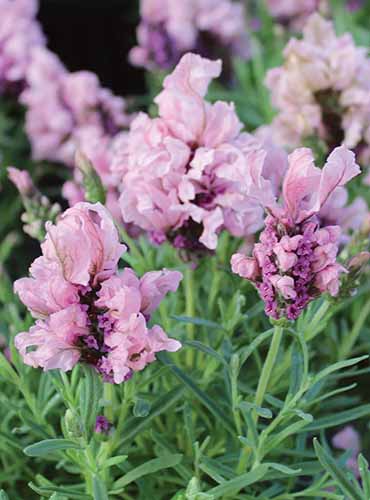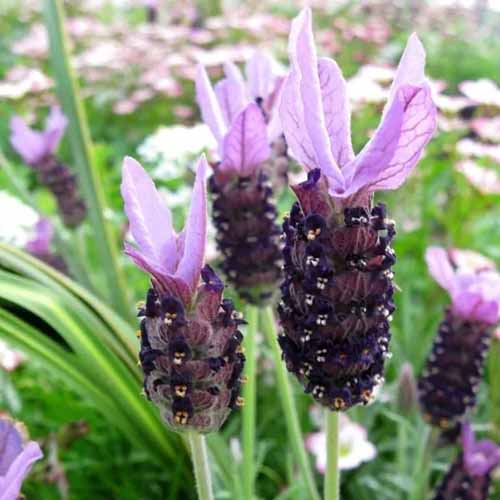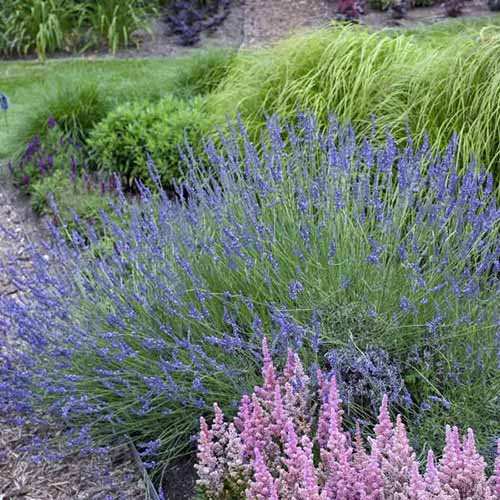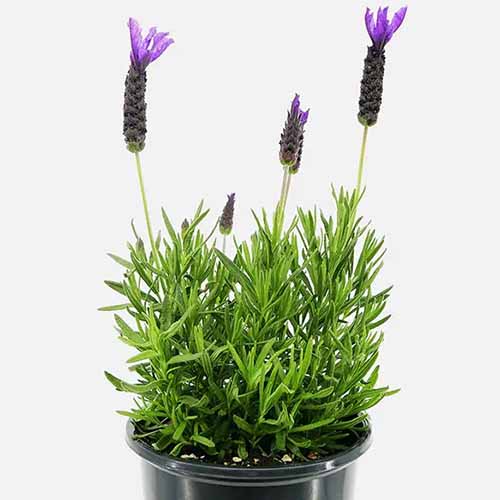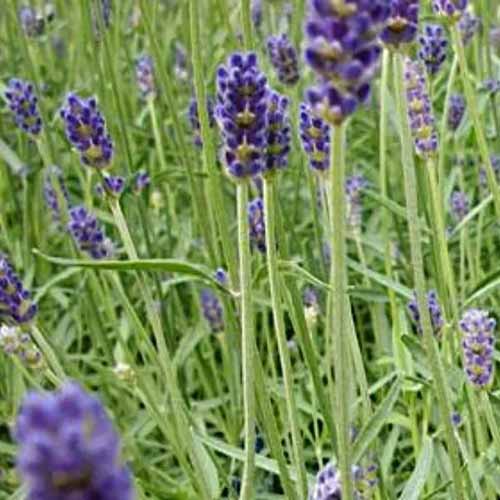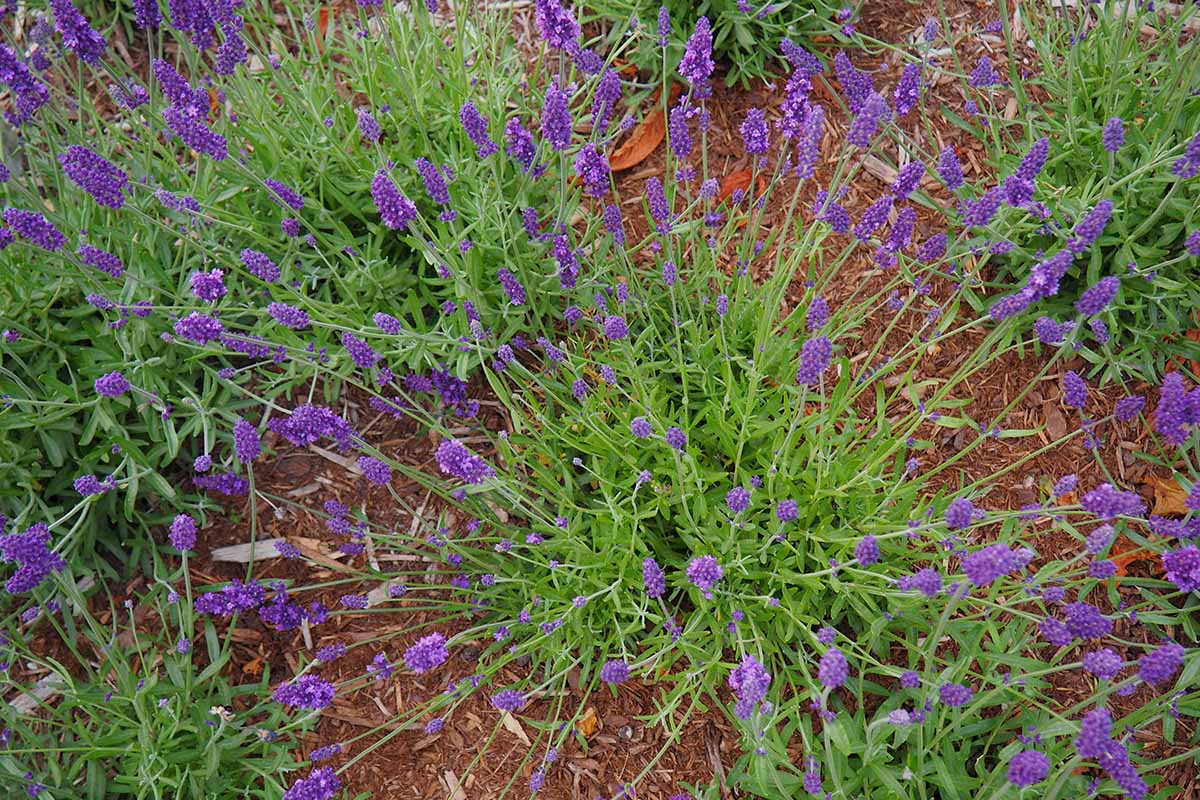However, that doesn’t mean folks in USDA Hardiness Zones 9 and up can’t enjoy them too. With over 450 varieties currently available, there are many selections that thrive in hot climates, both humid and arid. We link to vendors to help you find relevant products. If you buy from one of our links, we may earn a commission. Some of the highly versatile hybrid lavandins (L. x intermedia) can also tolerate heat and humidity. For locations with hot, arid conditions, a few English (L. angustifolia) cultivars plus the lavandins perform best, although the French and Spanish types also do well. In regions with warm, wet weather, the English selections really shine, but all four types are suitable for these conditions. However, extremely well-draining soil is mandatory for plants to thrive as oversaturated soil can lead to root rot. So regardless of where you live, you can partake of lavender’s beauty and many benefits! If your garden is in need of these aromatic herbs, join us now for a look at 11 of the best lavenders for hot climates. Here’s what’s coming up: The following tips can help ensure your plants have the right conditions to flourish in any climate: A Fleuroselect Gold Medal winner, these multi-branched plants are long flowering and self-cleaning, which means you don’t have to deadhead them. They bloom from late spring through summer in a tidy mound of seven to nine inches tall with a spread of 10 to 12 inches. ‘Bandera Purple’ Hardy in Zones 7 to 10, and a top choice for heat and humidity, ‘Bandera Purple’ makes an adorable addition to borders, containers, and edging or in alpine, herb, and rock gardens. You can find packets of 25 seeds available at Burpee.
2. French
French, or fringed lavender (L. dentata), is an excellent choice for hot, humid locales and features plump flower spikes of deep eggplant tipped with rosy-mauve bracts. It has a strong herbal fragrance with notes of camphor, and the silvery sage-green foliage has a distinct, toothed edges. Plants reach a height and spread of 24 to 36 inches. French Lavender A unique selection for foundations, low hedges, pathways and seating areas or in large patio planters and urns. Hardy in Zones 8 to 11. Plants can be purchased at Nature Hills Nursery.
3. Goodwin Creek Grey
A hybrid between the French (L. dentata) and wooly species (L. lanata), the lightly fragrant ‘Goodwin Creek Grey’ (L. x ginginsii) produces long flower spikes of deep purple with slightly toothed, silvery-gray foliage. The dense, attractive plants flower over an extended period, with blooms starting in late spring and continuing into fall, on mounds with a height and spread of 24 to 48 inches. ‘Goodwin Creek Grey’ Robust and reliable in heat and humidity, ‘Goodwin Creek Grey’ is well-suited to raised beds, containers, foundations, and patio planters. Hardy in Zones 7 to 10. Plants in three- and four-inch containers can be found at Walmart.
4. Grosso
A top performer for hot, dry areas in Zones 5 to 9, L. x intermedia ‘Grosso’ has big, bold flower spikes of deep violet with silvery, sage green foliage. Among the strongest-scented lavenders, it produces high levels of essential oils used for scenting soaps, perfumes, and potpourri. This large plant flowers in mid to late summer and grows into a handsome mound with a height of 24 to 30 inches and spreading 18 to 24 inches. ‘Grosso’ An excellent selection for low barriers, beds, foundations, seating areas, and walkways, or throughout cottage, courtyard, cutting, and herb gardens. Container plants are available at Burpee.
5. Hidcote
A classic English cultivar that does well in hot, dry climates, L. angustifolia ‘Hidcote’ is deeply perfumed, with long buds of deep bluish-purple that open to lilac flowers in mid spring to early summer. A Royal Horticultural Society Award of Garden Merit (AGM) winner, ‘Hidcote’ has evergreen foliage of frosty blue-green and forms mid-sized, bushy mounds 24 inches high and wide. ‘Hidcote’ Reliably durable and highly versatile for borders, containers or patio pots, low hedges, and foundations or in alpine, cottage, knot, and rock gardens. ‘Hidcote’ is hardy in Zones 4 to 10, which makes it suitable for cool locations as well. Two-packs of gallon-sized container plants are available at Home Depot.
6. Madrid Lavish Purple
Perfumed and highly ornamental, L. stoechas ‘Lavish Purple’ is part of the Madrid® series from Paradise Seed Co., and features exuberant, ruffled flowers of rosy-mauve with multiple bracts along the entire inflorescence. Blooming from late spring through summer, these heat- and humidity-resistant plants have a compact size with silvery glaucous foliage. Plants grow 12 to 18 inches tall with a spread of 16 to 20 inches. Madrid ‘Lavish Purple’ ‘Lavish Purple’ makes a showy addition to borders, containers, and edging or in alpine, herb, and rock gardens. Hardy in Zones 8 to 10. You can find container plants available at Burpee.
7. Otto Quast
Perfect for hot, arid conditions in Zones 7 to 9, L. stoechas ‘Otto Quast’ produces clouds of plump and highly fragrant, purple-black spikes tipped with lilac flags from late spring and continuing throughout summer. The gray-green foliage is evergreen and plants have a mounded or slightly rangy growth habit with a height and width of 24 to 36 inches. ‘Otto Quast’ Beautiful and reliable, it’s a top choice for beds, borders, containers, and cutting, courtyard, and xeric gardens. Plants in #5 containers are available at Nature Hills Nursery.
8. Phenomenal
L. x intermedia ‘Phenomenal’ (aka ‘Niko’) has pretty silvery-gray foliage and large, fragrant spikes of purple-blue. Highly floriferous, plants bloom in early summer and continue until fall. Tolerant of heat and humidity, ‘Phenomenal’ also has above average disease resistance. These plants have a naturally neat growth habit and reach a mature height of 24 to 36 inches with a spread of 36 to 48 inches. ‘Phenomenal’ A beautiful choice for beds, foundations, low hedges, or massed into drifts, and in cottage, cutting, herb, and knot gardens. Hardy in Zones 5 to 9. You can find ‘Phenomenal’ plants available at Nature Hills Nursery.
9. Portuguese
The Portuguese species, L. latifolia, aka broadleaf or spike lavender, has distinctively coarse, blue-green foliage and tall spires of periwinkle blue flowers that bloom from early to late summer. Heat and humidity resistant, this multi-branched evergreen has a domed form that grows 16 to 20 inches tall and wide with a fragrance that’s pungently camphor-like. Portuguese Lavender Spike plants are attractive in beds, containers, foundations, and massed into drifts or in alpine, butterfly, herb, and rock gardens. Hardy in Zones 6 to 9. Plants of the Portuguese species can be difficult to source, but you can find seeds available at True Leaf Market.
10. Primavera
L. stoechas ‘Primavera’ (aka ‘Anouk Deluxe 1225’), is a star in hot, humid regions, producing a nonstop display of beautiful, royal purple spikes with amethyst flags from late spring through summer. The flowers and finely textured leaves of gray-green are sweetly fragrant and form attractive mounds of 18 to 20 inches tall with a spread of 15 to 18 inches. ‘Primavera’ A charmer for containers around seating areas, patio planters, walkways, and in alpine, cottage, cutting, and rock gardens, ‘Primavera’ is hardy in Zones 7 to 9. Plants in #1 containers are available in two- and four-packs at Nature Hills Nursery.
11. Provence
One of the best picks for hot and humid summers, L. x intermedia ‘Provence’ features plump spikes of grape purple that open to mauve flowers in the mid to late summer garden. Among the most deeply perfumed, flowering starts in midsummer and continues into fall. Plants have cool, blue-green foliage that ages to gray, on large plants that reach 36 to 48 inches tall and 48 to 60 inches wide. ‘Provence’ A must-have where the scent can be enjoyed – plant around seating areas, in foundations, patio planters, bordering walkways, and cutting gardens. The dried flowers are widely used for fragrances, sachets, and toiletries. Hardy in Zones 5 to 9. Container plants are available at Nature Hills Nursery.
Growing Tips for Hot Regions
To prevent the common problem of root rot, always plant lavenders in well draining soil. Amend the soil with landscape sand, granite chips, or pea gravel to improve water flow. Plants can also be grown in hills or mounds to further improve drainage.
Foliar problems like powdery mildew can be avoided by ensuring plants are properly spaced for free flowing air circulation, which helps to keep leaves dry.
To help retain soil moisture without oversaturation, use a mulch that’s free-flowing and porous, such as granite chips or pea gravel. But keep the base of the stem clear with a four- to six-inch, mulch-free collar around the crown area.
Some selections can lag in intense afternoon sunshine and may benefit from shade during the hottest part of the afternoon.
And for full cultivation and care details, check out our guide on how to plant and grow lavender. Pick the one that’s right for your neck of the woods then give them full sun, well-draining soil, and space properly for ample air circulation, and you’ll be rewarded with lovely, fragrant blooms all summer long! Do you folks have any favorite recommendations for hot climates? Tell us about them in the comments section below. And for more lavender know-how, add these articles to your reading list next:
When and How to Prune Lavender for Lush, Showy PlantsHow to Grow Lavender from CuttingsWhat’s the Difference Between French and English Lavender?
